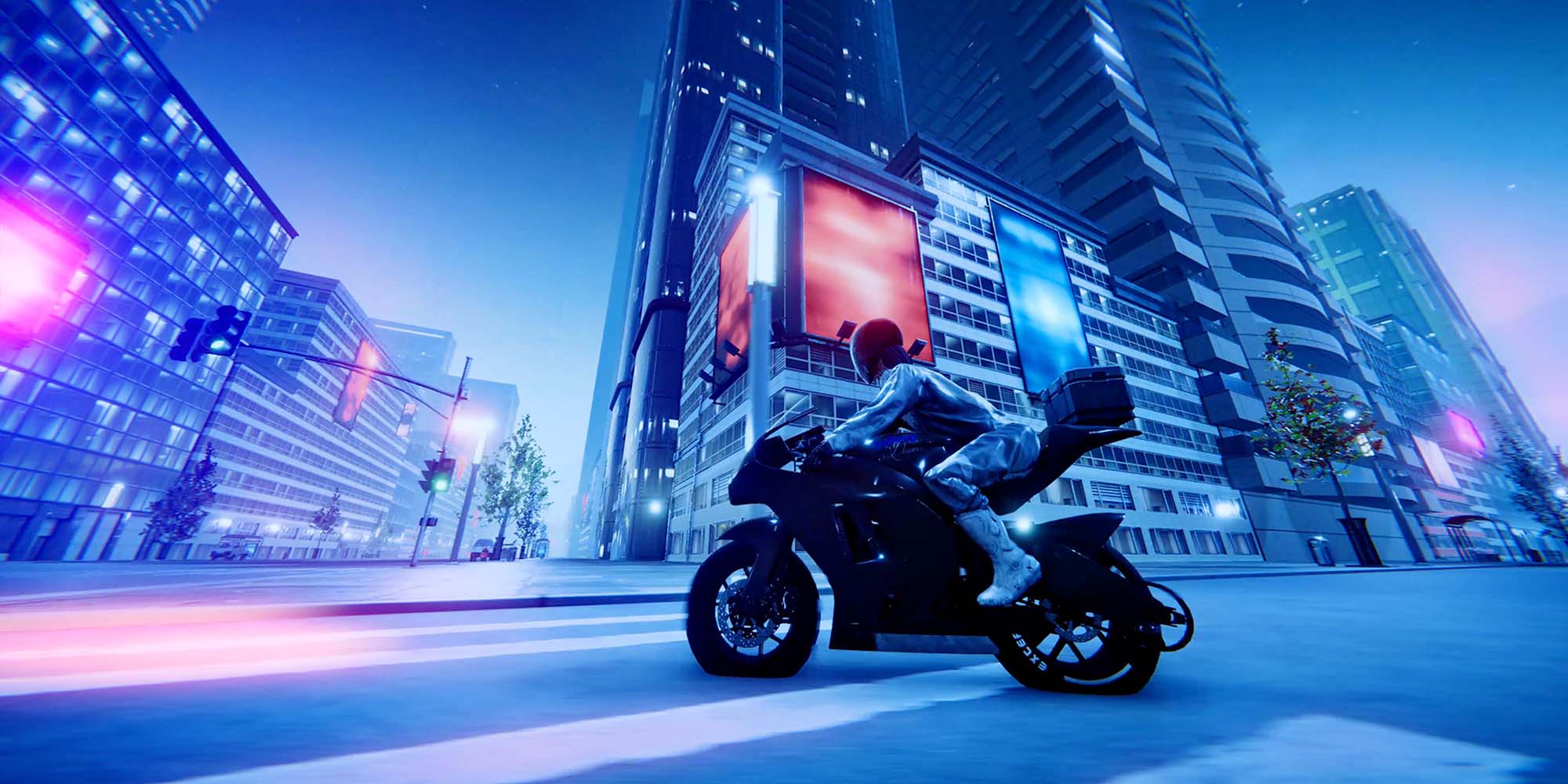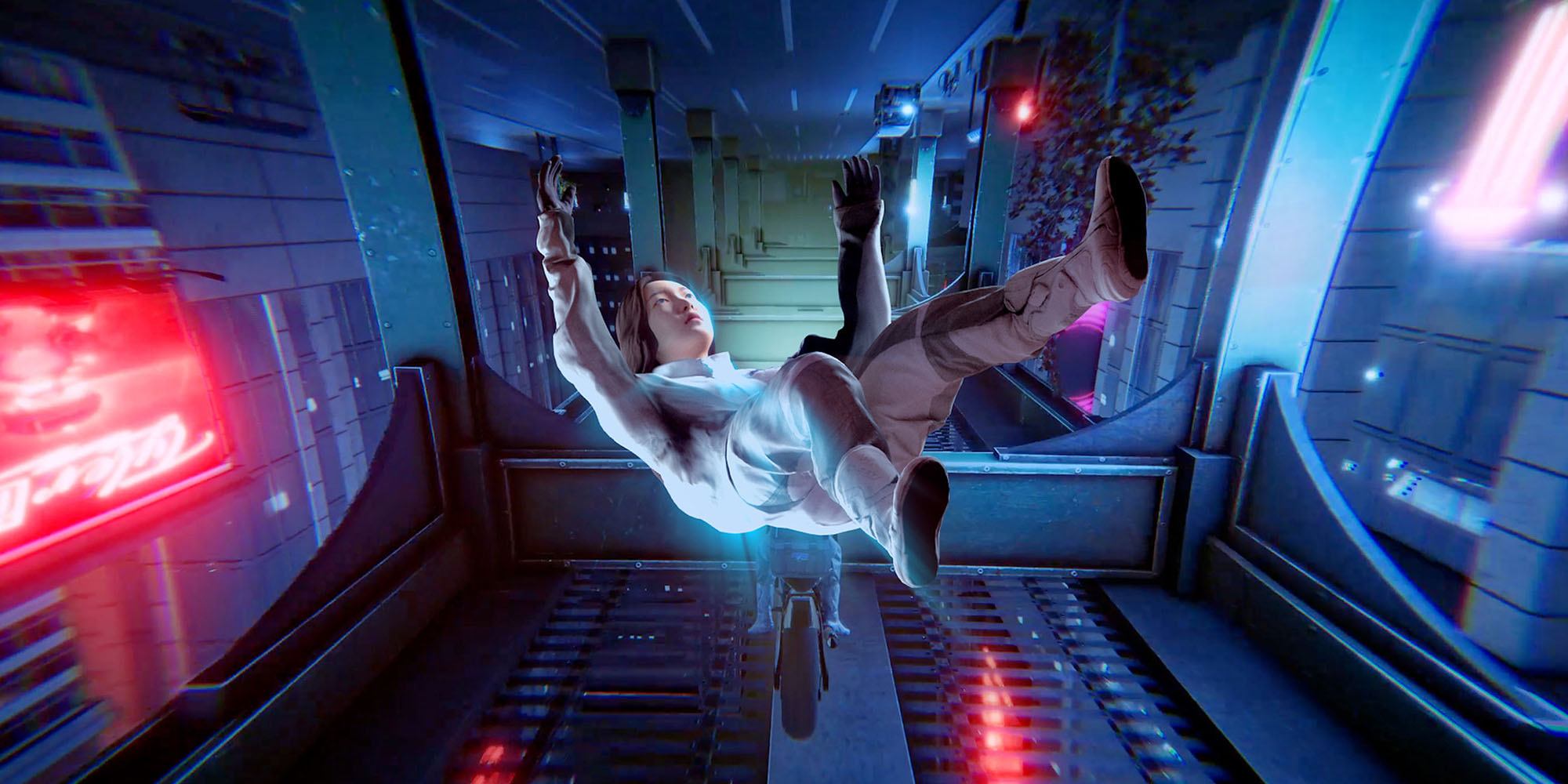Artificial intelligence, machine learning and new scientific visualisation tools are shaping the way we understand and create images. The newly named “New Animation Art” category will recognise work by artists from around the world. We are looking for projects that explore and experiment at the intersection of animation, art and technology.
This year, Ayoung Kim won a Golden Nica in the New Animation Art category for her project “Delivery Dancer’s Sphere”. In a fascinating mix of 3D animation and live-action-shooting, the artist creates a fictitious Seoul where the delivery driver Ernst Mo works for the platform “Delivery Dancer”. Under the control of the “Dancemaster” algorithm, she makes her endless deliveries. In an interview with Ayoung, we learned more about the creative process, the realization of the project and the fascinating protagonist Ernst Mo.
Can you tell us about the creative process behind the development of the fictional Seoul and the endlessly generated streets and routes?
Ayoung Kim: The story, which I like to call ‘pandemic fiction’, began with my experience of COVID-19 and being involuntarily detained in my city of Seoul for almost three years. During that time, I relied heavily on food delivery apps and services.
The pandemic led to restrictions on movement and an exponential growth in delivery platforms, which recruited drivers through promotions offering high fees. These delivery riders, who were the most mobile entities on the streets when taxis were scarce, delivered food parcels to various destinations, striving to meet the requirements of the shortest distance and minimum time for delivery. There was no need for people to interact with the drivers, who performed their “invisible” work at the behest of the master algorithm, in order to complete their next delivery faster and serve them at an optimized time.
I became curious about the delivery riders and their experiences since people did not have to interact with them. The riders were the most mobile entities throughout the pandemic, while everything else was on hold. And I found it increasingly bizarre that most people knew so little about the riders, like how they moved, and what kind of people they were.
I interviewed an experienced female delivery rider and rode on the backseat of her motorbike to experience the whole process of delivery service. It was a completely new experience and, I realized that their sense of perceiving reality is somehow bifurcated or multiplied by the fact that the riders have to look at the mobile screen all the time while they are driving, to get more delivery calls and check alarms on the delivery app, and at the same time they have to ride the physical road. And moreover, they need an extra mobile phone to watch the “actual navigation”, because the app doesn’t show the actual road navigation but the shortest distance. So, when the riders are on the road, they are looking at the physical space, the mobile screen to constantly check the delivery app, and an additional mobile screen for navigation. It’s quite a dangerous job and they have to be extremely alert, both physically and mentally. Otherwise, it could lead to an accident.
This hyper-alertness and the urge to be optimal in terms of body, time and distance is something essential in this increasingly accelerated society. This invisible labour led me to think about the idea of “Ghost Dancer,” the top-tier levelled delivery rider who is hyper-fast due to the distortion of time and space in fiction. They are invisible as they ride at the speed of light, and that was my kind of satire.
I also read a lot about the physical and philosophical notions of ‘time’ and ‘space’. I had advisors in astrophysics, topological mathematics and philosophy who provided genuine and helpful advice on how to think about the concept of the story, as well as other resources such as interviews, reading and research.

Can you tell us more about the technologies and methods you used to bring the Delivery Dancer’s Sphere project to life?
Ayoung Kim: There were several challenges and troubleshooting in terms of visual technology, but my team and I enjoy those processes. There were always alternative solutions if the first option didn’t work. For instance, I wanted to make a sequence using photogrammetry scanning to portray the typical narrow, labyrinthine alleyways of Seoul. However, it was too expensive to hire a professional company to do lidar scanning. So, our developer suggested using a lidar scanning app on an iPhone, which worked very well. We later arranged and assembled these scanned streets and alleys in Maya.
The motorbike riding sequence, which has been described as a kind of “dance simulation in the game”, was made in Unity. I wanted to create a skyscraper-based cityscape that contrasted with the narrow alleyways of the photogrammetry sequence. We have been working with a great Unity developer for a number of years, who has been a great source of advice and information. He has been a technical director on many of my recent projects.
These are the software or visual technologies we deployed in the project: Unity, Maya, 3D scanning and retopology (at a professional lab), Mixamo, GoPro MAX 360, Premiere Pro, After effect and Live action shooting.
I enjoy using both the optical images captured in the real world, featuring real actors, and post-optical images achieved in CGI software and game engines. There is always a combination and collision of both image-making techniques in my work. For instance, I strongly wanted to include GoPro MAX 360 footage into the work, as well as the photogrammetric scanning. The GoPro 360 footage shows a strangely distorted optical view that doesn’t look optical at all, but that can only be achieved with optical technology. The photogrammetry scan itself is also a combination of the optical image and the post-optical image.

Could you tell us more about the creation and development of the main character Ernst Mo?
Ayoung Kim: When conceiving the project, I thought I wanted to make a subtle queer love story. In general, the delivery riders are lonesome (because they work and move alone). I imagined a top-tier female delivery rider, “Ghost Dancer”, who encounters and becomes fascinated by an identical-looking person who appears in reality. There are innumerable possibilities for their relationship, just as there are innumerable possibilities for worlds in the theory of possible worlds. Antagonism, compassion, affection, love, longing, and the urge to kill are all states of affairs in possible worlds. These are the ways in which two entities may exist and relate to each other. I have always been interested in this identical duality.
For the names Ernst Mo and En Storm, I wanted to play with anagrams. I tried some words on an online anagram generator and the “monster” created interesting sounding names. In general, monstrous figures in our society are those who are negated and considered misfits. The non-conformists in this world are easily seen as monstrous. Ernst Mo used to be a perfect unit in the world ruled by the algorithm (Dancemaster), but since she encounters En Storm, her solid world logic starts to collapse. She deviates from her path and slows down, which is lethal on the job. However, these two characters are not enervated. Monsters always have the inner strength to foster something.
” I sometimes feel that the contemporary art world that I belong to has a similar aspect to Delivery Dancer’s world. It’s highly competitive and, although not many people talk about it, neoliberal. But the beauty of it is that there are always those invisible or scarcely visible people who make a deviation. Their tireless efforts make the paths of art.”
Ayoung Kim
How do you hope the audience will perceive your project and what discussions or reflections do you hope your audience will have regarding the issues you address?
Ayoung Kim: As they like! The project was for me to feel and perceive the world that was invisible to me, and likewise, I hope the audience has a chance to think about what it is like to live in the contemporary world, surrounded by the gig economy and on-demand services. Or they can just enjoy the subtle love story between two women, or even enjoy the visual elements.

In her multifaceted practice, Ayoung Kim synthesizes the outcomes of far-reaching speculation, establishing connections between biopolitics and border controls, the memories of stones and virtual memories, and ancestral origins and imminent futures. These narratives take the forms of video, moving image, virtual reality (VR), game simulation, sonic fiction, diagrams, and texts that the artist presents as exhibitions, screenings, performances, theatrical projects, and publications. Kim decisively integrates geopolitics, mythology, technology, and futuristic iconography in her work, and she retroactively seeks speculative time to infiltrate the present. Foto: Min Gyungbok
